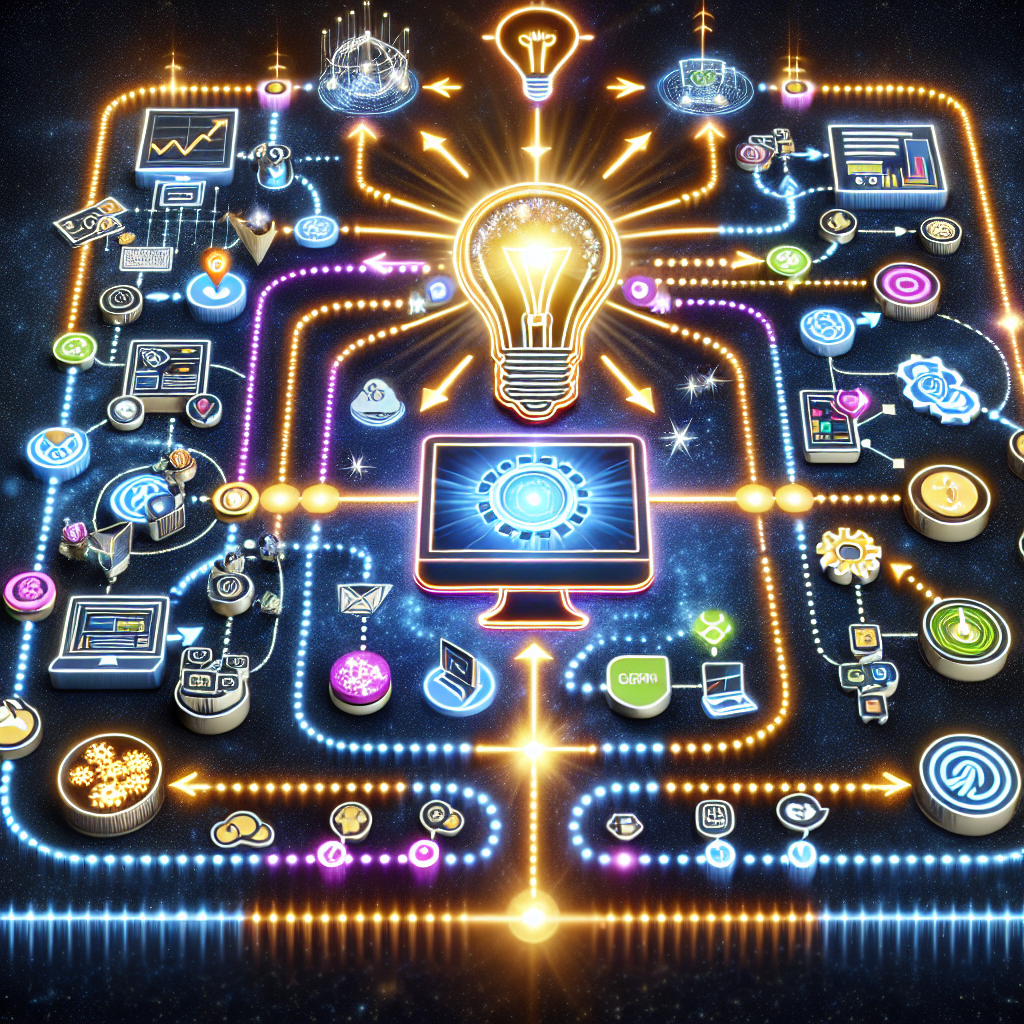The Role of AI in Customer Journey Mapping
Customer journey mapping is a critical tool for businesses to understand and improve the customer experience. It involves mapping out the various touchpoints and interactions a customer has with a brand, from the initial awareness stage to post-purchase support. By visualizing the customer journey, businesses can identify pain points, opportunities for improvement, and ways to enhance the overall customer experience.
In recent years, artificial intelligence (AI) has emerged as a powerful tool for customer journey mapping. AI technologies, such as machine learning and natural language processing, can analyze vast amounts of data to uncover insights about customer behavior, preferences, and trends. By leveraging AI, businesses can create more accurate and comprehensive customer journey maps that reflect the complexities of today’s omnichannel customer experience.
In this article, we will explore the role of AI in customer journey mapping and how businesses can leverage this technology to enhance their understanding of the customer journey.
Benefits of AI in Customer Journey Mapping
There are several key benefits of using AI in customer journey mapping:
1. Data-driven insights: AI can analyze large volumes of data from multiple sources, including customer interactions, social media, and website analytics. By processing this data, AI can uncover patterns and trends that may not be apparent through traditional analysis methods. This allows businesses to gain a deeper understanding of customer behavior and preferences, enabling them to create more accurate and targeted customer journey maps.
2. Personalization: AI can help businesses personalize the customer journey by analyzing individual customer data and preferences. By segmenting customers based on their behavior and preferences, businesses can create tailored experiences that resonate with each customer. This can lead to higher customer satisfaction and loyalty, as customers feel understood and valued by the brand.
3. Real-time insights: AI can provide real-time insights into customer behavior, allowing businesses to adapt their customer journey maps on the fly. By monitoring customer interactions in real-time, businesses can identify opportunities for improvement or intervention, such as offering personalized recommendations or resolving customer issues before they escalate.
4. Predictive analytics: AI can also help businesses predict future customer behavior based on historical data and trends. By using predictive analytics, businesses can anticipate customer needs and preferences, allowing them to proactively tailor the customer journey to meet these expectations. This can lead to higher conversion rates, as businesses can anticipate customer needs and provide relevant offerings at the right time.
How AI is Used in Customer Journey Mapping
AI is used in several ways to enhance customer journey mapping:
1. Sentiment analysis: AI can analyze customer feedback, reviews, and social media posts to determine customer sentiment towards a brand. By analyzing sentiment data, businesses can identify areas of improvement and tailor the customer journey to address customer concerns. For example, if customers consistently express dissatisfaction with a particular product feature, businesses can prioritize fixing this issue to improve the overall customer experience.
2. Customer segmentation: AI can segment customers based on their behavior, preferences, and demographics. By grouping customers into segments, businesses can create targeted customer journey maps that cater to the specific needs and preferences of each segment. This allows businesses to deliver personalized experiences that resonate with different customer groups, leading to higher customer satisfaction and engagement.
3. Predictive analytics: AI can predict future customer behavior based on historical data and trends. By using predictive analytics, businesses can anticipate customer needs and preferences, enabling them to proactively tailor the customer journey to meet these expectations. For example, if AI predicts that a customer is likely to churn based on their recent interactions, businesses can intervene with personalized offers or support to retain the customer.
4. Chatbots and virtual assistants: AI-powered chatbots and virtual assistants can guide customers through the customer journey, providing personalized recommendations, answering questions, and resolving issues in real-time. By leveraging AI-powered chatbots, businesses can provide seamless and personalized customer experiences across various channels, such as websites, social media, and messaging apps.
5. Recommendation engines: AI can analyze customer data to generate personalized product recommendations based on past purchases, browsing history, and preferences. By leveraging recommendation engines, businesses can offer relevant and timely product suggestions to customers, increasing the likelihood of conversion and upsell opportunities.
Frequently Asked Questions (FAQs)
Q: What is the role of AI in customer journey mapping?
A: AI plays a crucial role in customer journey mapping by analyzing large volumes of data to uncover insights about customer behavior, preferences, and trends. By leveraging AI technologies, businesses can create more accurate and comprehensive customer journey maps that reflect the complexities of today’s omnichannel customer experience.
Q: How can AI help businesses personalize the customer journey?
A: AI can help businesses personalize the customer journey by analyzing individual customer data and preferences. By segmenting customers based on their behavior and preferences, businesses can create tailored experiences that resonate with each customer. This can lead to higher customer satisfaction and loyalty, as customers feel understood and valued by the brand.
Q: What are some examples of AI applications in customer journey mapping?
A: Some examples of AI applications in customer journey mapping include sentiment analysis, customer segmentation, predictive analytics, chatbots, virtual assistants, and recommendation engines. These AI technologies can help businesses analyze customer data, personalize the customer journey, predict future behavior, and provide real-time support to customers.
Q: How can businesses leverage AI in customer journey mapping?
A: Businesses can leverage AI in customer journey mapping by investing in AI technologies, such as machine learning and natural language processing, that can analyze vast amounts of data to uncover insights about customer behavior and preferences. By incorporating AI into their customer journey mapping processes, businesses can create more accurate and personalized customer journey maps that drive higher customer satisfaction and engagement.

